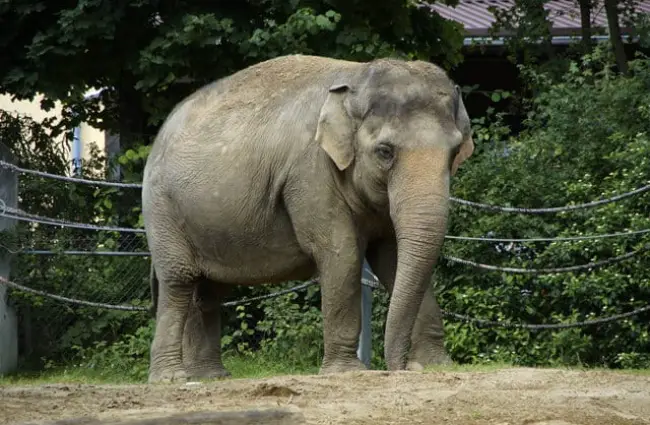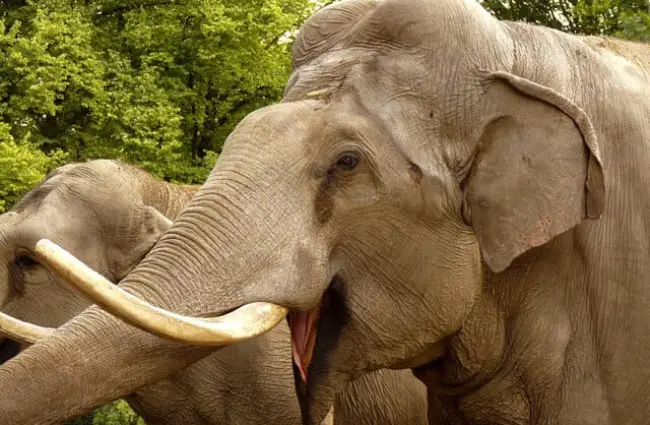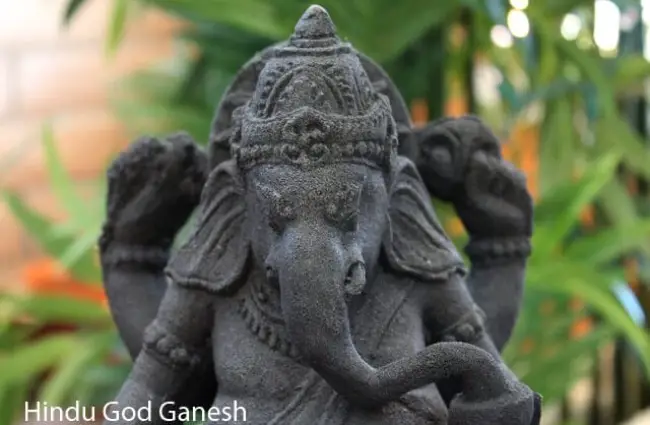Unveiling the Majestic Indian Elephant: A Journey into Asia’s Gentle Giant
Deep within the verdant landscapes of Asia roams a creature of immense power, profound intelligence, and surprising grace: the Indian Elephant. As one of the three recognized subspecies of the Asian Elephant, Elephas maximus indicus, this magnificent mammal holds a pivotal role in its ecosystem and a revered place in human culture. From its complex social structures to its vital contributions to forest health, the Indian Elephant is a living testament to nature’s grandeur. Join us as we explore the captivating world of these gentle giants, uncovering their secrets, understanding their challenges, and appreciating their enduring legacy.

Where the Wild Things Roam: Indian Elephant Habitat and Range
The Indian Elephant is a creature of diverse tastes when it comes to its home. Its natural habitat spans a wide array of environments across the Indian subcontinent and Southeast Asia. These elephants thrive in tropical and subtropical moist broadleaf forests, including both evergreen and semi-evergreen varieties. They are also frequently found in dry deciduous forests, grasslands, and even scrublands. The availability of water and food sources dictates their movements, often leading them to river valleys and areas with abundant vegetation.
Geographically, their range extends across thirteen countries, primarily concentrated in India, Nepal, Bangladesh, Bhutan, Myanmar, Thailand, Laos, Cambodia, Vietnam, Malaysia, and parts of China. Within these regions, their populations are often fragmented, residing in protected areas, national parks, and wildlife sanctuaries. For an animal lover hoping to spot one in the wild, focusing on these protected zones during the dry season, when elephants congregate near water sources, offers the best chance. Look for signs like broken branches, fresh dung, and distinct elephant trails through dense vegetation.

The Elephant’s Feast: A Herbivore’s Diet
As obligate herbivores, Indian Elephants spend a significant portion of their day foraging. Their diet is incredibly varied and opportunistic, adapting to the seasonal availability of different plant matter. They are primarily grazers and browsers, consuming a vast quantity of vegetation daily to sustain their enormous bodies.
- Grasses: A staple of their diet, especially during the monsoon season when grasses are lush and abundant.
- Leaves and Twigs: They strip leaves from trees and shrubs, often breaking branches with their trunks to reach tender foliage.
- Bark: A crucial source of calcium and roughage, particularly during drier periods. They use their tusks and trunks to peel bark from trees.
- Roots: Elephants dig for roots and tubers, especially when other food sources are scarce.
- Fruits: Seasonal fruits are a highly sought-after treat, providing essential sugars and vitamins.
- Cultivated Crops: Unfortunately, their foraging can sometimes lead them into agricultural fields, where they consume crops like rice, sugarcane, and bananas, leading to human-elephant conflict.
An adult Indian Elephant can consume anywhere from 150 to 250 kilograms (330 to 550 pounds) of vegetation per day, along with 80 to 200 liters (20 to 50 gallons) of water. This immense dietary requirement means they are constantly on the move, shaping their environment as they forage.

Physical Marvels: Distinguishing the Indian Elephant
While often confused with its African cousins, the Indian Elephant possesses distinct physical characteristics. These elephants are generally smaller than African Elephants, with a more rounded back and smaller ears that are typically straight at the bottom. Their skin color ranges from grey to dark brown, often appearing dusty or muddy from their frequent dust and mud baths, which serve as protection against parasites and the sun.
- Size: Adult males, or bulls, can stand up to 3.5 meters (11.5 feet) tall at the shoulder and weigh between 4,000 and 5,000 kilograms (8,800 to 11,000 pounds). Females are generally smaller.
- Tusks: A key differentiator. Only some male Indian Elephants grow tusks, which are elongated incisors. Female Indian Elephants typically have either very small tusks called “tushes” or no tusks at all. Tuskless males are known as “makhnas.”
- Trunk: This remarkable appendage is a fusion of the nose and upper lip, containing tens of thousands of muscles. It serves as a nose for smelling and breathing, a hand for grasping and manipulating objects, a straw for drinking, and even a snorkel when swimming. The Indian Elephant’s trunk has one finger-like projection at its tip, unlike the two found on African Elephants.
- Feet: Their large, padded feet are perfectly adapted for traversing varied terrain, distributing their immense weight and providing excellent traction.

The Fabric of Society: Social Structure and Communication
Indian Elephants are highly social animals, living in complex matriarchal societies. These herds are typically led by the oldest and most experienced female, known as the matriarch. Her wisdom guides the group to food and water sources and protects them from danger.
- Herd Composition: Herds usually consist of related females and their offspring. Young males stay with the herd until adolescence, typically around 10-15 years of age, before dispersing to live solitary lives or form bachelor groups.
- Communication: Elephants communicate through a rich repertoire of sounds, gestures, and chemical signals.
- Vocalizations: These range from trumpets, roars, and rumbles to infrasonic calls, which are sounds below the range of human hearing. These low-frequency calls can travel for many kilometers, allowing herds to communicate across vast distances.
- Body Language: Ear flapping, head shaking, trunk movements, and specific postures convey messages about mood, dominance, and intent.
- Chemical Signals: Elephants use pheromones, particularly during mating season, to signal reproductive status.
- Intelligence and Emotion: Elephants exhibit remarkable intelligence, problem-solving abilities, and a wide range of emotions, including joy, grief, and empathy. They are known to mourn their dead, showing deep bonds within their family units.
The Cycle of Life: Mating and Reproduction
The reproduction process of Indian Elephants is a slow and deliberate affair, reflecting their long lifespan and complex social structure.
- Mating: Males typically enter a state called “musth,” a periodic condition characterized by heightened aggression, elevated testosterone levels, and secretions from temporal glands. Musth signals a male’s fitness and readiness to mate. Females signal their receptivity through chemical cues and specific behaviors.
- Gestation: After successful mating, the gestation period is one of the longest in the animal kingdom, lasting approximately 18 to 22 months. This extended period allows for significant fetal development, resulting in a relatively large and well-developed calf at birth.
- Birth: A single calf is usually born, weighing around 90 to 120 kilograms (200 to 265 pounds) and standing about 1 meter (3.3 feet) tall. Twin births are extremely rare.
- Calf Rearing: Elephant calves are highly dependent on their mothers and the entire herd for several years. They nurse for up to two years, but begin to sample solid food much earlier. The matriarch and other female “aunts” play a crucial role in protecting and teaching the young, demonstrating alloparenting behavior. Calves learn essential survival skills, social etiquette, and foraging techniques from their elders.
- Lifespan: In the wild, Indian Elephants can live for 60 to 70 years, with some individuals exceeding this in optimal conditions.
Echoes of the Past: The Indian Elephant’s Evolutionary Journey
The evolutionary history of elephants is a fascinating tale spanning millions of years. Indian Elephants belong to the order Proboscidea, a group that includes extinct mammoths and mastodons. Their lineage can be traced back to ancient ancestors that roamed Africa and Asia. The Asian Elephant diverged from its African counterparts millions of years ago, adapting to the unique environmental pressures of the Asian continent.
Key evolutionary adaptations include the development of their iconic trunk, specialized molars for grinding tough vegetation, and their immense size, which helps deter predators and allows them to access a wider range of food sources. The Indian Elephant, specifically, has evolved to thrive in the diverse forest and grassland ecosystems of Asia, showcasing subtle differences in morphology and behavior compared to other Asian Elephant subspecies.
Architects of the Ecosystem: Their Contribution to Nature
Indian Elephants are not merely inhabitants of their environment; they are active architects, shaping the very landscapes they traverse. Their immense size and foraging habits have profound ecological impacts, making them a keystone species.
- Seed Dispersal: By consuming fruits and then depositing seeds in their dung, often far from the parent plant, elephants play a critical role in forest regeneration and seed dispersal. Many plant species rely on elephants for their propagation.
- Path Creation: Their movements through dense forests create clearings and pathways, which are then utilized by smaller animals, facilitating movement and access to resources for other species.
- Water Hole Creation: In dry seasons, elephants often dig for water, creating temporary water holes that benefit a wide array of other wildlife.
- Vegetation Management: By browsing on trees and shrubs, elephants help maintain open grasslands and prevent forests from becoming too dense, promoting biodiversity and creating varied habitats.
- Nutrient Cycling: Their dung enriches the soil, returning vital nutrients to the ecosystem and supporting a diverse community of insects and microorganisms.
Their interactions with other animals are generally indirect, through habitat modification. However, they can deter predators like tigers through their sheer size and protective herd behavior, indirectly benefiting other prey species within their vicinity.
A Tapestry of Interaction: Humans and Indian Elephants
The relationship between humans and Indian Elephants is one of profound cultural significance, historical cooperation, and increasing conflict. This complex interaction demands careful consideration for the future of both species.
Cultural Significance: Reverence and Symbolism
In many Asian cultures, particularly in India, elephants are revered as sacred animals, symbolizing wisdom, strength, loyalty, and good fortune. They are central figures in religious ceremonies, folklore, and art.
- Hinduism: Lord Ganesha, the elephant-headed deity, is one of the most beloved gods, worshipped as the remover of obstacles.
- Festivals: Elephants are often adorned and participate in religious festivals and processions, particularly in South India and Sri Lanka.
- Historical Roles: Historically, elephants were used in warfare, logging, and royal processions, showcasing their intelligence and trainability.

Conservation Challenges: A Fight for Survival
Despite their cultural importance, Indian Elephants face severe threats, leading to their classification as an Endangered species by the IUCN. The primary challenges include:
- Habitat Loss and Fragmentation: Expanding human populations, agriculture, infrastructure development, and deforestation are shrinking and fragmenting elephant habitats, isolating populations and limiting their access to food and water.
- Human-Elephant Conflict: As habitats shrink, elephants increasingly come into contact with human settlements, leading to crop raiding, property damage, and sometimes loss of human and elephant lives. This conflict is a major conservation challenge.
- Poaching: While less prevalent than for African Elephants, poaching for ivory (from tusked males) and other body parts remains a threat in some areas.
- Illegal Wildlife Trade: Calves are sometimes captured for the illegal pet trade or for use in tourism.
Safety in the Wild: Encountering an Elephant
For hikers or wildlife enthusiasts venturing into elephant territory, understanding how to react during an encounter is crucial. Elephants are generally not aggressive unless provoked or feeling threatened, especially if calves are present.
- Maintain Distance: Always keep a respectful and safe distance. Never approach an elephant, especially a mother with a calf or a bull in musth.
- Observe Behavior: Learn to read elephant body language.
- Warning Signs: Head held high, ears spread wide, trunk raised and sniffing, mock charges, trumpeting, or ground scraping can indicate agitation.
- Calm Behavior: Ears relaxed, head down, gentle foraging.
- Do Not Run: Running can trigger a chase response. Instead, back away slowly and quietly, giving the elephant plenty of space.
- Avoid Blocking Paths: Never position yourself between an elephant and its escape route, or between an elephant and a water source.
- Stay Downwind: Elephants have an excellent sense of smell. Staying downwind can help prevent them from detecting your presence too quickly.
- Never Feed Wild Elephants: This habituates them to humans and can lead to dangerous encounters.
Caring for Captive Elephants: A Zookeeper’s Role
Caring for Indian Elephants in captivity, such as in zoos or sanctuaries, requires specialized knowledge and dedication to ensure their physical and psychological well-being. Zookeepers play a vital role in providing an environment that mimics their natural habitat as closely as possible.
- Dietary Management: Provide a high-fiber diet consisting primarily of hay, supplemented with fresh browse (tree branches and leaves), fruits, and vegetables. Nutritional supplements may be added. Monitor intake to prevent obesity and ensure proper nutrient balance.
- Environmental Enrichment: Crucial for mental stimulation and physical activity.
- Space: Large enclosures with varied terrain, including soft substrates like sand or dirt for foot health.
- Water Features: Access to pools or mud wallows for bathing, cooling, and skin care.
- Foraging Opportunities: Hiding food, using puzzle feeders, or scattering browse to encourage natural foraging behaviors.
- Objects: Providing logs, tires, or other manipulable objects for play and exploration.
- Social Structure: Whenever possible, house elephants in social groups, ideally a matriarchal herd, to allow for natural social interactions and bonding.
- Veterinary Care: Regular health checks, including foot care (trimming nails and pads), dental examinations, and monitoring for common ailments like arthritis or skin conditions. Preventative medicine and prompt treatment are essential.
- Behavioral Training: Positive reinforcement training is used for husbandry procedures, allowing elephants to voluntarily participate in their own care, reducing stress for both animals and keepers.
- Avoidance: Zookeepers must avoid practices that cause stress or harm, such as isolation, inadequate enclosure size, lack of enrichment, or reliance on punitive training methods.
A Compendium of Fascinating Facts
The Indian Elephant is full of surprises. Here are some intriguing facts:
- Long Memory: Elephants are renowned for their exceptional memory, capable of remembering routes to water sources, other elephants, and even humans for many years.
- Self-Awareness: They are one of the few species known to pass the mirror test, indicating self-awareness.
- Third Eyelid: Elephants possess a nictitating membrane, or “third eyelid,” which helps protect their eyes from dust and debris.
- Sensitive Trunks: The tip of an elephant’s trunk is incredibly sensitive, capable of picking up a single blade of grass or detecting subtle vibrations in the ground.
- Skin Care: Elephants regularly take dust and mud baths. The mud acts as a natural sunscreen and insect repellent, while the dust helps to exfoliate their skin.
- Dominant Righty or Lefty: Just like humans, elephants can be “right-tusked” or “left-tusked,” using one tusk more predominantly than the other for digging and foraging.
The Future of the Indian Elephant: A Call to Action
The Indian Elephant is a creature of immense ecological and cultural value, a living relic of ancient times, and a vital component of Asia’s biodiversity. Its continued existence is a testament to its resilience, yet its future hangs in the balance. Understanding their complex lives, appreciating their intelligence, and recognizing their critical role in the ecosystem are the first steps towards ensuring their survival.
From the aspiring zoologist delving into their intricate biology to the casual observer marveling at their majesty, the Indian Elephant offers endless opportunities for learning and inspiration. Protecting their habitats, mitigating human-elephant conflict, and supporting conservation efforts are not just about saving a species; they are about preserving the delicate balance of our planet and honoring one of its most extraordinary inhabitants. Let us work together to ensure that the trumpeting calls of the Indian Elephant continue to echo through the forests of Asia for generations to come.


![Red Angus Closeup of a beautiful Red Angus cowPhoto by: U.S. Department of Agriculture [pubic domain]https://creativecommons.org/licenses/by/2.0/](https://animals.net/wp-content/uploads/2020/03/Red-Angus-4-100x75.jpg)

